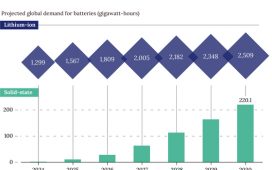Investments in Bangladeshi startups dropped 70% quarter on quarter to about $6.7 million in the January to March period. Year on year, the drop is even bigger, standing at 82%
Until recently, Bangladesh’s startup scene was the toast of the nation, with a surge in funding and international attention. However, a recent chill in the global investment climate and domestic challenges have cast a shadow on this promising ecosystem.
Investments in Bangladeshi startups dropped 70% quarter on quarter to about $6.7 million in the January to March period in 2024, according to Bangladesh Startup Investment Report 2024 by LightCastle partners. Year on year, the drop is even bigger, standing at 82%.
Only four Bangladeshi startups secured venture capital funding in the first three months this year – a significant drop from 20 in the same period last year, and seven deals in the last quarter of 2023.
A perfect storm of challenges
Experts believe several factors have contributed to the slowdown in startup funding in Bangladesh. Even globally, startup investments dropped 26% QoQ to $44 billion in the first three months of this year.
This also is a big issue for us, as our startups are heavily dependent on foreign VCs.
“A majority of the funding we receive comes from abroad. And since Taka is losing value against the Dollar, most of the foreign investors have taken a back seat and are waiting for things to stabilise. Taka might depreciate even more.
Tk80 once got you $1 now you need Tk120 to get $1. So, their investment is losing value,” said Syed Javed Noor, deputy managing director at IDLC Finance, which operates a Tk45 crore venture capital fund.
“Another factor is VC funding globally has dried up,” he added.
Inflationary pressure is another reason that kept coming up. An issue not only plaguing Bangladesh, but most major economies as well.
“Inflationary pressures have led to a decline in consumer demand across the economy, posing growth challenges for the majority of startups,” wrote Zahedul Amin, Director, Finance, Strategy and Consulting Services, LightCastle in a recent report.
An industry insider who preferred to remain anonymous on the other hand believes local startups also share a lot of the blame. According to him/her, Bangladesh’s start-up ecosystem has three main problems at the moment: The total addressable market is small, ie, the problems being addressed are not large enough; the solutions being provided are also not far-reaching enough; and poor leadership.
Naturally, success and scalability have become difficult to maintain, which in turn is dissuading investors.
The great VC cash crunch
VCs themselves are also facing a money crunch. The lack of cheap capital is a big reason why venture capital investments have dropped. The world had access to a steady flow of cash and cheap capital from 2009–2010 to 2022. This was made possible by the US Federal Reserve’s decision to keep interest rates low.
Because rates were low, money flowed into riskier investments like venture capital funds, which then grew in size and number. As investors got more money, startups by extension got a lot of money all at once.
When investors set up their portfolios, they put more money into private equity and venture capital investments. And the goal for these investors was the top line. While funding shrunk briefly during the pandemic, it grew again in 2021, thanks to a boom in technology adoption.
But in 2022, the market fixed itself because of high demand and problems in the supply chain caused by the war between Russia and Ukraine.
As the US Federal Reserve kept raising interest rates, reaching a 22-year high, it became harder to get cheap capital. Since assets with lower risk (like treasury bills) now have higher returns, investments with higher risk dried up.
Not all doom and gloom
“I personally believe the situation will improve within six to nine months. We will get a clearer picture of the situation and a lot of uncertainties will be cleared. Bangladesh has huge potential so investors will come,” asserted Syed Javed Noor.
The upcoming second edition of the Startup Summit is expected to have a positive impact on startup investment trends. These initiatives reflect a concerted effort to improve the entrepreneurial landscape and appeal to both domestic and international investors.
Government initiatives such as the Fund of Funds and National Startup Policy, combined with post-election stability, are expected to propel growth.
Also, sectors which did not receive much investment like e-commerce and retail are now showing promise. These emerged as the frontrunner in attracting investments, receiving $6.5 million last quarter. PriyoShop’s Pre-Series A funding round of $5 million was a standout deal in this sector.
Apon Wellbeing, a multi-channel marketplace start-up that provides affordable retail products with credit benefits and yearly health insurance coverage to apparel workers, secured $1.5 million in funding.
As investment trends shift, early-stage startups should reconsider their fundraising strategies, particularly given the increased involvement of local investors. While global investors have historically been the primary source of funding, recent trends point to a shift towards later-stage ventures, indicating a more risk-averse investment landscape.
“The fact remains that startups with good fundamentals and solving a problem for a large market will attract capital in whatever form it comes in,” Shaheen Siam, Founding Member & CSO, ShopUp was cited in the LightCastle Partners 2024 report.
Experts agree that Bangladeshi startups need to remain agile and adapt to the changing investment landscape. While global trends point towards easing macro headwinds, including inflation and interest rates, startups should focus on profitability and clear paths to sustainability.










